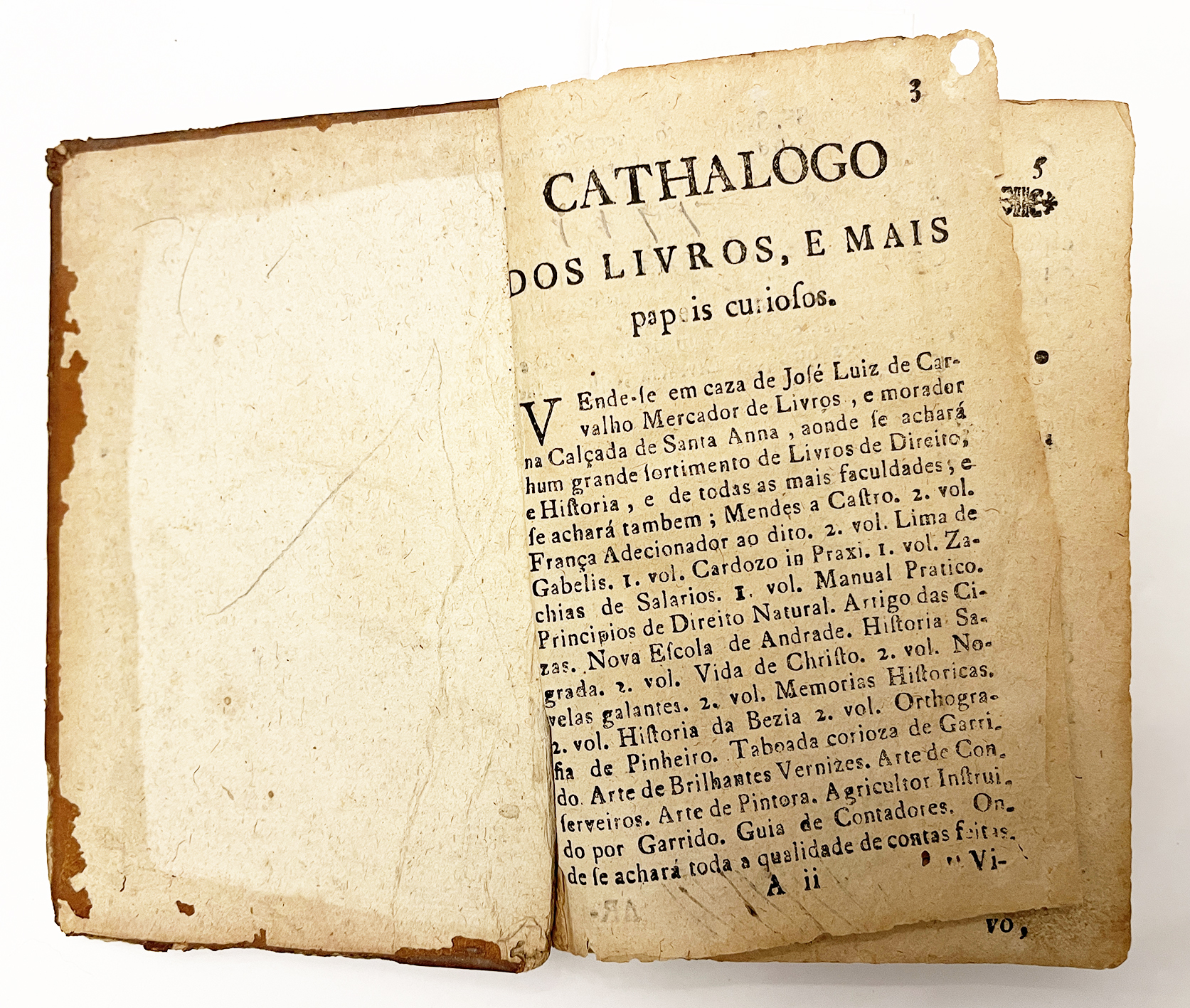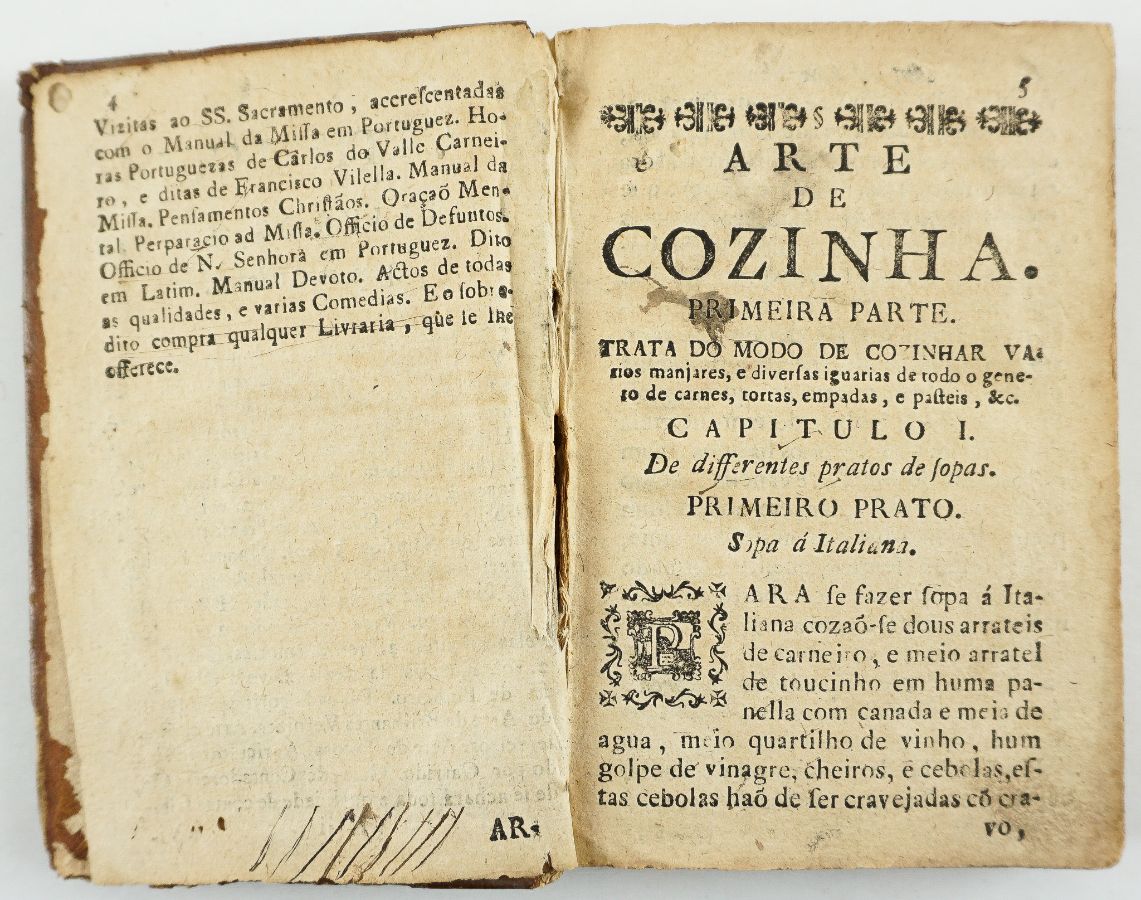Kitchen art
Arte de cozinha : primeira parte. Trata do modo de cozinhar varios manjares, e diversas iguarias de todo o genero de carnes, tortas, empadas, e pasteis, &c
Authors: Rodrigues, Domingos, 1637-1719
Handwritten note: First cookery book published in Portugal. The author was Domingos Rodrigues, born in 1637 and died in 1719. The book was printed by João Galvão, Lisbon, 1680. It was published in 1683 by the same printer. 3rd edition in 1668 by Manoel Lopes Ferreira. It was also reprinted in 1732 by the Ferreiriana workshop; in 1741 by Carlos Esteves Mariz; in 1704 (?) by João Antonio dos Reis; in 1814 by Eugenio Augusto and in 1836 by the same printer. It was not possible to identify the edition due to the mutilation of the present copy, which was acquired in a Lisbon second-hand bookshop.
1st edition - 1680 - printed by João Galvão, Lisbon
2nd edition - 1683 - same printer
3rd edition - 1689 - in the workshop of Manoel Lopes Ferreira
1732 – Ferreirian workshop;
1741 – workshop by Carlos Esteves Mariz;
1704 (?) in the workshop by João Antonio dos Reis;
1814 Eugenio Augusto and 1836on the same printer
The best known, and considered the first cookery treatise published in Portugal, is Domingos Rodrigues' (1637-1719) A arte da cozinha, which came out in 1680. Domingos Rodrigues claimed to have 29 years on the cooker and a multitude of banquets devoured by the guests of the Portuguese royal table when he published a small volume dedicated to the arts of cookery. "All the things I teach I have tried by my own hand and most of them I have invented by my own skill," he wrote in the prologue. The royal cook is said to have started practising his trade at an early age, during the reign of King João IV, the first sovereign of the Bragança dynasty. He won the favour of His Majesty Pedro II, "the peaceful", by working hard and "with neatness and cleanliness". The history of Arte de cozinha is curious. Known as Portugal's first cookery book, the volume written by Domingos Rodrigues had three editions during the author's lifetime. The first in 1680, the second in 1683 and finally, the last in 1698. Others were published throughout the 18th century, in 1732, 1741, 1758, 1765 and 1794. A real publishing success in a country where, at the time, publishing a book wasn't easy or that common. At the time of Domingos Rodrigues - i.e. at the end of the 17th century - we realise that the use of saffron, sugar and the most varied spices and peppers is one of the elements that demonstrates the economic power of the Portuguese empire, which could send foodstuffs that cost fortunes from the most distant places on the globe. In this way, Domingos Rodrigues' book gives us a clue both to what the king's kitchen meant and what was eaten at Portuguese royal dinners. The book is therefore both a reflection of everyday life and a meeting place for customs over the centuries. The book underwent changes with each new edition, with different recipes being added or removed. Amongst the editions available at Brasiliana USP, the first of which has an unspecified date and the second from 1732, we can see some changes. The 1732 edition is considered the most complete ever found in Portugal. It even served as the basis for the book being reissued by the Imprensa Nacional/Casa da Moeda in 1987. The 1836 edition has a curious history: it was printed in 1836 in the workshops of J.J. Barroso e Cia. in Rio de Janeiro. In the history of the book's editions, this one - the Brazilian one - was never counted as "official" by Portuguese researchers Maria da Graça Pericão and Maria Isabel Faria.


